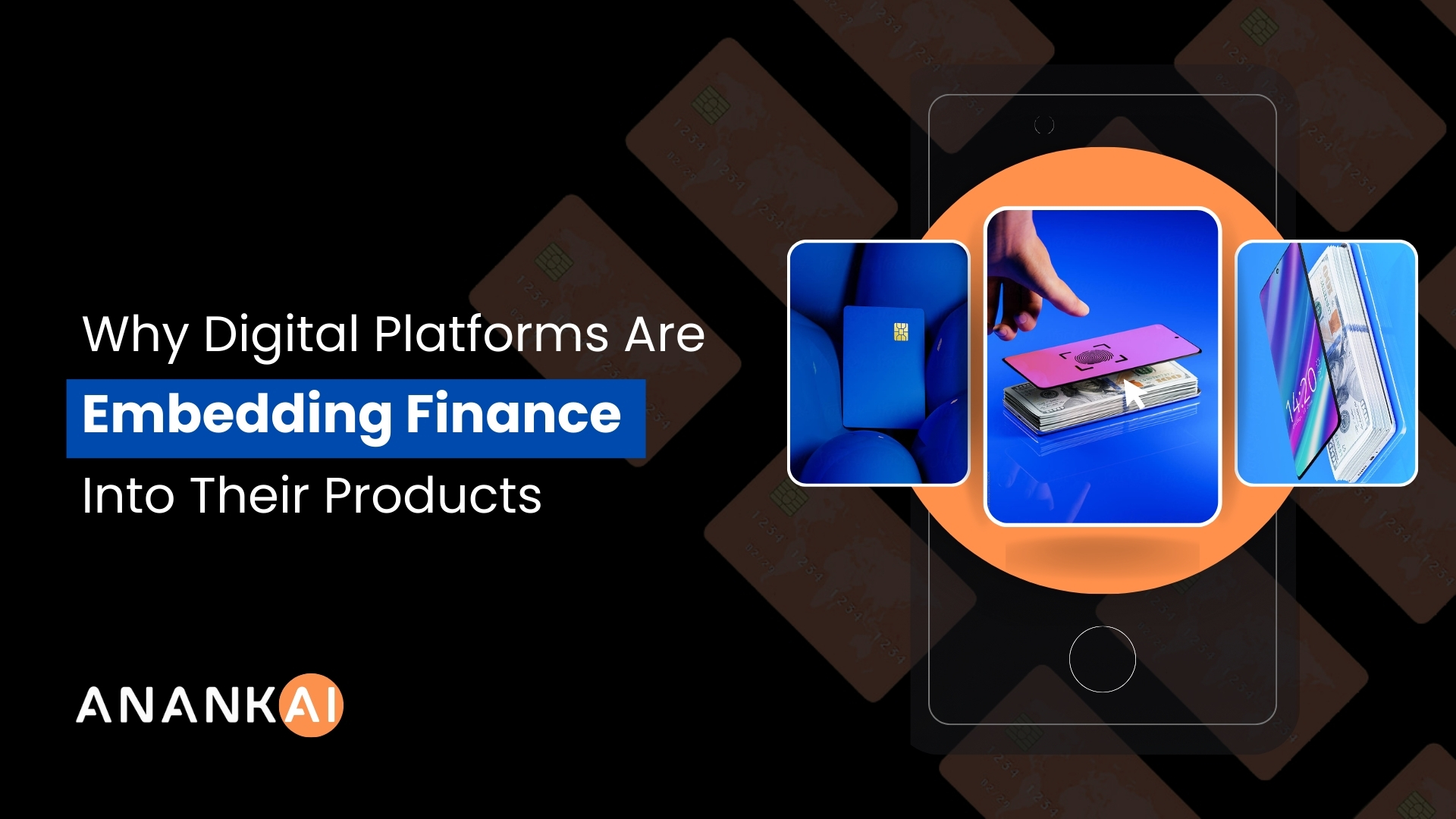
In today’s AI race, digital platforms are no longer asking if they should embed financial services but how soon they can.
From ride-hailing apps to e-commerce marketplaces, embedded finance is becoming a critical strategy to increase revenue, boost customer retention, and unlock new business models. It’s not just about offering payments anymore, it’s about becoming a digital financial layer for your users.
At the core of this transformation lies one strategic decision: choosing the right embedded finance platform, powered by a compliant, scalable digital wallet platform and supported by electronic money institution (EMI) capabilities.
Let’s break down why embedded finance matters more than ever and how digital platforms can make the leap.
What Is Embedded Finance And Why Is It Taking Over?
Embedded finance refers to the integration of financial services (like payments, wallets, lending, or insurance) directly into a non-financial platform’s user experience.
Think:
- Ride-sharing apps offering instant driver payouts
- Marketplaces with built-in buyer protection and escrow
- Creator platforms enabling in-app tipping and wallet balance
In every case, users don’t leave the app to complete financial transactions. The experience is unified, branded, and frictionless.
But here’s what’s changed recently: embedded finance is no longer just a nice-to-have. It’s becoming a core growth lever for digital-first businesses.
Why Are Platforms Embedding Financial Services?
1. Better Control Over Customer Experience
Third-party integrations come with limits like branding, UX, and control are restricted. By embedding finance natively, platforms can own the end-to-end journey.
This means:
- Custom flows (onboarding, payouts, KYC)
- Unified branding and design
- Faster issue resolution and deeper customer insights
2. New Revenue Streams
With embedded finance, platforms can:
- Monetisze transactions (fees, FX, etc.)
- Offer premium financial features (wallet top-ups, virtual cards)
- Build loyalty with wallet balance incentives or cashback
3. Reduced Churn
When users have money in a wallet or access financial tools within the product, their frequency and duration of engagement increases. Finance becomes a natural part of their behaviour inside the app.
The Infrastructure Behind Embedded Finance
To make embedded finance work, you need more than a slick interface. You need infrastructure and it must be compliant, modular, and scalable.
Here’s what powers a robust embedded finance play:
1. A Digital Wallet Platform
This is where funds are stored, transferred, or redeemed. The wallet supports:
- User and merchant balances
- P2P or B2B transfers
- Currency management (domestic & international)
- Transaction monitoring
- Wallet hierarchies (parent-child accounts, agent models)
2. Electronic Money Institution (EMI) Licensing
Offering wallet services or handling client funds requires regulatory compliance. Platforms can:
- Become an EMI themselves (requires time, capital, and ongoing oversight), or
- Partner with an EMI and use their license via a platform like AnankAI
An EMI ensures legal handling of:
- KYC/KYB processes
- Fund safeguarding
- AML screening and reporting
- User account management
3.Embedded Finance Platform (APIs, Compliance, Governance)
A strong platform abstracts away the complexity with APIs for:
- Onboarding (individuals & businesses)
- Card issuance or processing
- Transaction initiation & verification
- Alerts, audit logs, and real-time compliance
Done right, you don’t need to rebuild infrastructure, you just plug into it. For live experience on plug and play model, let us know here.
How Platforms Can Get Started
Every platform’s goals are different. Some want to offer virtual cards to gig workers. Others want to hold wallet balances for creators or buyers. A few want to become fintechs themselves and much more.
But the steps are common:
- Define your financial flows: payouts, collections, loyalty, balances, fees
- Decide on regulatory strategy: own a license or partner with one
- Choose a technology partner: find an embedded finance platform that:
Offers a full-stack digital wallet platform
Supports EMI workflows
Is customiszable and white-label ready - Go live in stages: start small (e.g., hold balances), expand (cards, FX, lending)
What Sets Modern Embedded Finance Platforms Apart?
Not all providers are equal. The ideal platform should offer:
- Multi-tier account management (e.g., parent wallet, agent wallet, sub-users)
- Real-time KYC/KYB and onboarding
- Full compliance stack: AML, audit trails, transaction monitoring
- White-labeled interfaces or headless APIs
- Cross-border readiness: SWIFT, SEPA, FX integrations
- Rapid deployment: weeks, not months
How AnankAI Fits Into This Landscape
For platforms ready to take the leap, AnankAI offers a white-labeled, fully managed embedded finance platform that combines:
- A scalable digital wallet platform
- Built-in support for EMI operations
- Customiszable onboarding flows
- APIs for payments, cards, compliance, and reporting
- Modular setup across regions (Europe, UK, India, etc.)
Whether you’re a digital marketplace, SaaS platform, or creator economy product, AnankAI lets you offer financial services under your brand, without building from scratch.
It’s not just infrastructure. It’s a launchpad for your next growth phase.
Conclusion
Embedded finance is changing the setup of digital platforms. It’s no longer a back-office integration, it’s a front-line product strategy.
With the right partner and platform, your business can:
- Create new revenue models
- Deepen customer engagement
- Own financial experiences end-to-end
As the line between fintech and every other industry continues to blur, the question isn’t whether to embed finance, it’s who will help you do it right.
Curious how embedded finance can work for your platform?
Let us know here for a personaliszed walkthrough.
